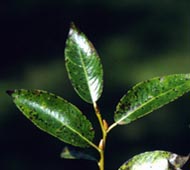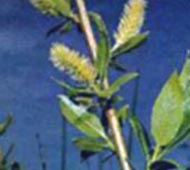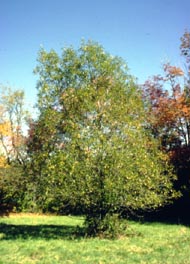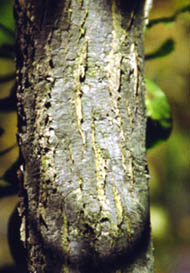Shining Willow

Leaf Characteristics
- broad, flat leaves
- simple leaves
- not lobed
- fine, double teeth
- all teeth same size
- shorter stem
- all side veins same length
- leaves long and narrow
- no fine silky hair both surfaces
- green on both sides
- somewhat wider leaves

Fruit Characteristics
- other fruit (not cone, winged, acorn, or in pod or capsule)
- in a small capsule
- capsule with floss
- capsule without disk at base
Although commonly occurring as a large shrub, the Shining Willow sometimes is found as a tree with a short trunk. The bark is smooth and light brown to reddish-brown in color. The natural habitat of this tree is stream banks and swamps. The Shining Willow ranges in southern Canada from Newfoundland to Manitoba, and southward in the U.S. to Pennsylvania and Nebraska. In Ohio it grows in the northern half of the state. Although the wood of this tree has no commercial value, people have employed parts of the tree for useful objects. Some people have used the tough, flexible branches to make a sort of cord or rope. Others find the inner bark useful for making fish lines and fish nets. The main use of this tree, however, is in ornamental plantings and in preventing stream bank erosion. Some landscapers consider it to be the most attractive of our native willows.
 Tree Size
height up to 25'
diameter 6" - 8"
Tree Size
height up to 25'
diameter 6" - 8"
 Bark
Bark 